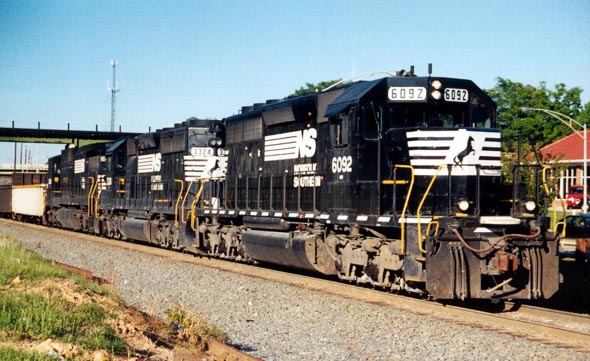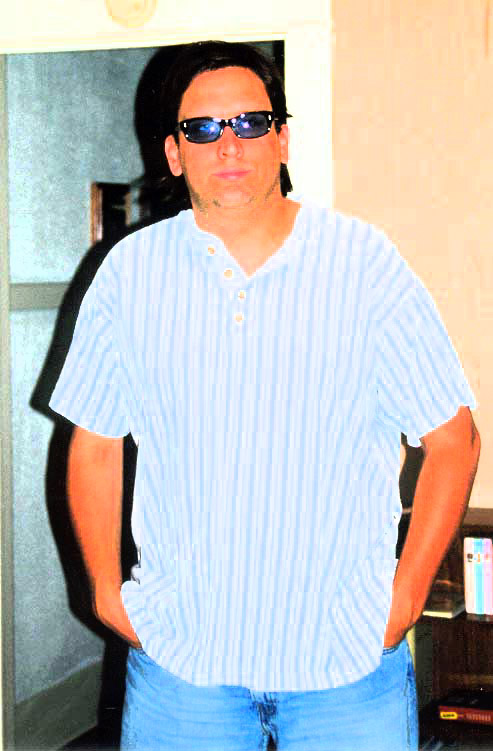
Overcoming Train Traffic II:
Trains Are A Threat to Public Safety
by Joseph C. Hinson
December 10, 2001
The Herald goes forth with their recent anti-railroad stance, evident
in their Overcoming
Train Traffic article from November 5, 2001. This time it was in the
guise of a Letter to the Editor written by a Valeria Bouknight from Rock
Hill. I read it and immediately my ears turned red, my face turned red,
the hand that held the mouse turned red. You could say I was angry. But
that might be an understatement. Here is her letter, followed by the one
I wrote that same night which was printed just this week.
-----------------------------
Trains Are A Threat To Public Safety
(Published November 23, 2001)
I think they should have done something about trains blocking traffic
in downtown Rock Hill the very first time that the trains were coming through
there.
I know that I am not the only one who has complained, but you have
to stop and think, what if a fire truck or an ambulance had to get through?
They would have to go all the way around, and probably about the time they
got to where they were going, the building could have burned down or a
person could have gotten hurt or died by the time the ambulance got around
to them.
So you just stop and think about it, and make an improvement on this
real soon.
Valerie Bouknight
Rock Hill
-----------------------------
Rock Hill Needs Trains
(Published December 10, 2001)
I am sorry that people, including Tim Morgan, Stephen Turner and,
it would seem, the staff at The Herald as well as Valerie Bouknight do
not understand the situation regarding train traffic in downtown Rock Hill.
Norfolk Southern has to stop in Rock Hill in order to switch out cars,
most of which originate or terminate either at Bowater, the other industry
in Rock Hill, or in Chester for the L&C Railway.
This train traffic is a key element to keeping and attracting major
industry to the area that keeps jobs in Rock Hill and surrounding area,
keeps the economy strong and keeps food on the table for many of us in
this area. It would be seem that Morgan and Turner should understand this
more than anyone.
Furthermore, the city leaders who built Dave Lyle Boulevard were
extremely short-sighted. The railroad was there first, probably by at least
100 years. They should have known that problems could arise years down
the road by developing so closely to the tracks. Much of what is happening
now could have been avoided with a little foresight and common sense.
The same is true today. If you do not want to get blocked by a train
crossing Main or White Street, I invite you to go just one or two blocks
down and go under the tracks at Black Street. The number of trains coming
through Rock Hill is well below what is average even for Chester, where
no fewer than 20 trains come through on CSX alone. That number does not
include Norfolk Southern or Lancaster and Chester.
It is also good to remember that without the railroad, there would
never have been a Rock Hill. Train traffic is not something to overcome,
as The Herald stated in its article a few weeks ago. Murder, child and
spousal abuse, cancer, now that is something to overcome. But not train
traffic.
Joe H.
Chester, SC
http://www.carolinarails.com
-----------------------------
Stephen Turner is director of the Rock Hill Economic
Development Corp. Tim Morgan is director of the York County Regional Chamber
of Commerce. As I mentioned in my letter, you would think that these men
more than anyone else in Rock Hill -- certainly some idiot railfan in Chester
-- would be able to grasp the concept of how beneficial the railroad has
been to Rock Hill.
Of course, I should have taken her first sentence and expounded on
that a bit. "I think they should have done something about trains blocking
traffic in downtown Rock Hill the very first time that the trains were
coming through there." See, the first time that "the trains were coming
through there," there was not a Rock Hill. In fact, the town was built
around the railroad AFTER the railroad came through. In other words, no
railroad would have meant no Rock Hill.
Also, the railroad came through Rock Hill sometime in the 50s, the
1850s that is. A simple search on Google
for Louise
Pettus brought up this site, CC&A Railroad Built In 1849. The Charlotte,
Columbia and Agusta was a predecessor to the Southern Railway, which in
1982 was merged with Norfolk & Western to become Norfolk Southern.
(Pettus is a retired professor from Winthrop College in Rock Hill
who has written extensively on the area. My favorite work from her is The
Springs Story: The First 100 Years. Some of my L&C information
came from her book, as I mention on the bibliography section of my railroad
site. I knew that if she didn't have good information on railroading in
Rock Hill, no one else would either.)
From her site, she writes, "The exact route that the Charlotte &
South Carolina Railroad should take was the subject of much debate. The
most western route proposed would have taken the railroad through the village
of Ebenezer (now a Rock Hill suburb), but people objected. They considered
a railroad too noisy, too dirty and a despoiler of fine cotton land. Ebenezer
residents proposed that the line should run through the blackjack land
poor land for growing cotton because it lacked potash. The
move away from Ebenezer created Rock Hill, which was destined
to outgrow its older neighbor. About six years passed before the first
wood-fueled locomotive reached Rock Hill in 1852.
"The Rock Hill site was the highest point on the railroad between
Charlotte and Augusta. The story is that the crew laying the track encountered
so much rock that the supervisor, J. Lawrence Moore, gave the place the
name Rock Hill."
I have to stop here. So not only did the railroad CREATE Rock Hill,
but they named the place too! There's more.
"A trestle was built across the Catawba River not far south of the
present location of the Hoescht-Celanese plant. The first train arrived
in Fort Mill on July 4, 1852. Fort Mill, like Rock Hill, had less than
half a dozen homes before the arrival of the railroad, and most of those
homes were scattered. Rail traffic provided a great stimulus for the
growth of both towns."
And then in the 60s, the 1960s, someone had a bright idea. They began
planning to build a road so close to the railroad tracks that it was bound
to become a problem for everyone. And it did. Naturally, it's Norfolk Southern's
fault, not the city planners who were too blind with dollar signs -- or
too dumb -- to realize they were doing something incredible stupid.
And then her second paragraph, which was just as good as the first
one: "I know that I am not the only one who has complained, but you have
to stop and think, what if a fire truck or an ambulance had to get through?
They would have to go all the way around, and probably about the time they
got to where they were going, the building could have burned down or a
person could have gotten hurt or died by the time the ambulance got around
to them."
I have to admit that I do not know the ins and outs of what happens
to emergency vehicles when a train is blocking the roads in downtown Rock
Hill, South Carolina. But since the railroad has gone through town for
150 years, I have to think two things: 1.) The emergency response team
probably knows the fastest and most direct to where they're going and very
likely take into account whether a train may or may not be there. 2.) If
anyone has ever died, been injured or lost a house/building or a dog on
account of a train blocking the roads, I have no doubt that we would have
heard all about it. Quickly. The lawyers would have been foaming at the
mouth over this one. I would invite the Herald to send someone to the archives,
perhaps Jason Cato would be up to the job, to search for a life or a house
fire that could have been saved due to a train blocking a road. I'm guessing
that he wouldn't even have to leave the Herald building, maybe not even
have to leave his computer desk. I look forward to seeing this story from
the Herald. I'm thinking it would make front page news, "Norfolk Southern
burns down a house, kills two. Pet poodle missing."
By the way, in the first rant on this subject, I mentioned that the
Herald was going to run a story on me concerning my web site and history
of the L&C Railway. So far, that article has not run. They say it will
appear closer to Christmas. Nothing like a heart-warming story of a guy
who takes train pictures at Christmas.
to
my next rant
(when
posted)
My
Rants and Raves
The
Joseph C. Hinson Home Page



About the lead shot: I'm standing on White Road and the
train is backing up. Or shoving in railroad
terminology. We're at the south end of the yard in this
shot. The trestle going over Dave Lyle -- see how
close Dave Lyle is to the tracks; that building in the
background is across four lanes of traffic AND a
median! --is the SB line to Bowater. The L&C operates
this line in Lancaster County while Norfolk
Southern operates it in York County. This doesn't have
anything to do with this rant; I just like to give
props to the L&C as much as I can. As mentioned,
I'm standing on White Street; one block over is
Main Street and then comes Black Street. (JCH)

You know, now that I think about it. Should I have even
written that letter? Am I a reporter afterall? Well, not really, but I
play one on TV. (So far, it's fake TV in my teleproduction course at York
Tech.) But anyway, has Gerald Rivera ever written a letter to the editor
about a story he may eventually work on? Not recently, as he's didging
bullets somewhere in the vicinity of the front line in Afghanistan. But
what was I saying again? Oh, well...



